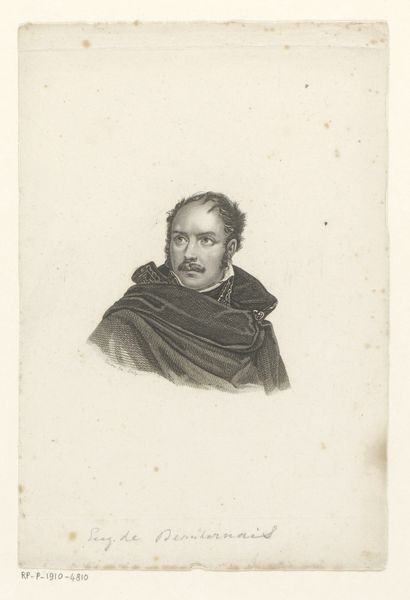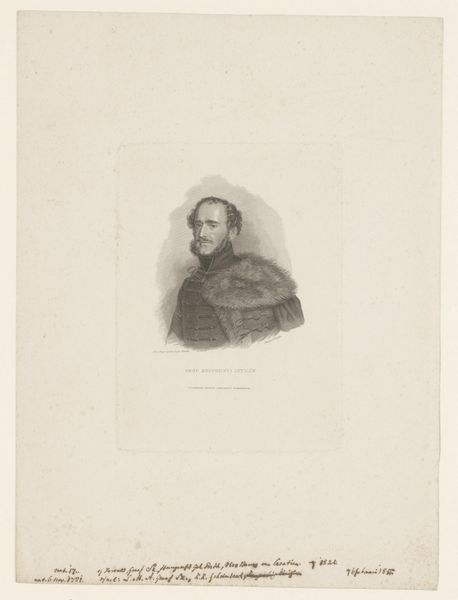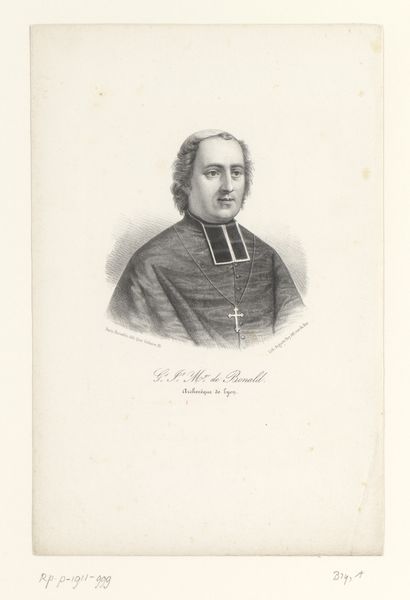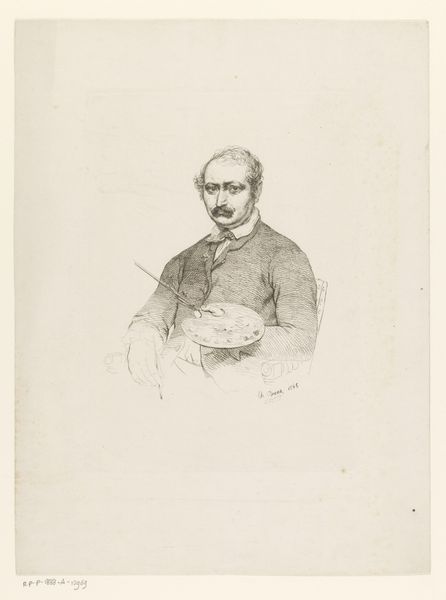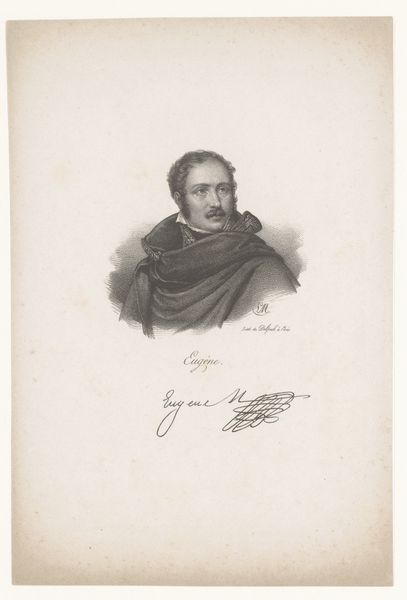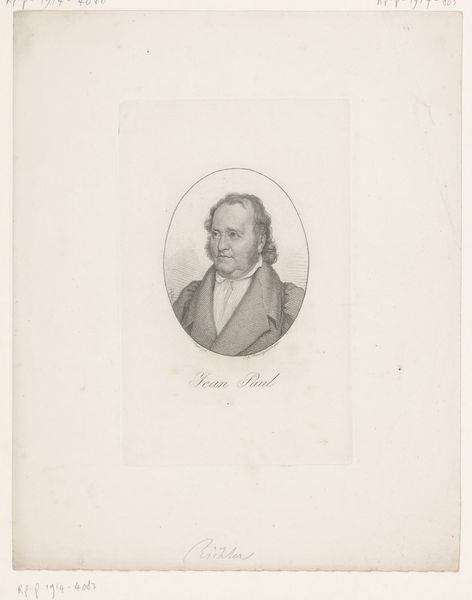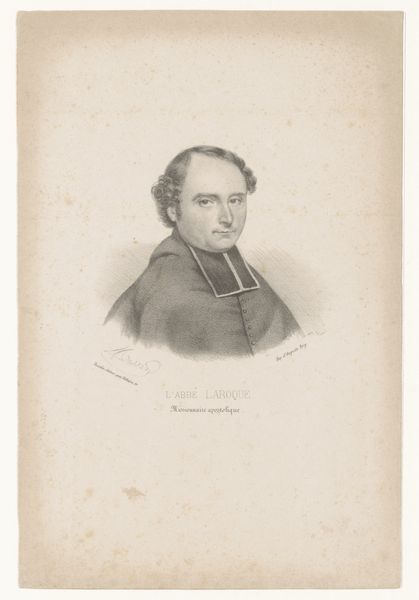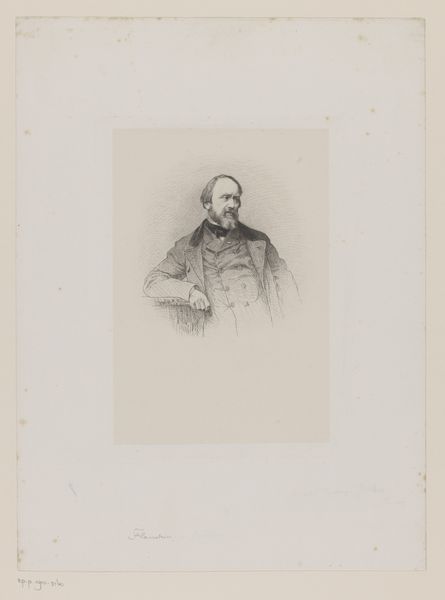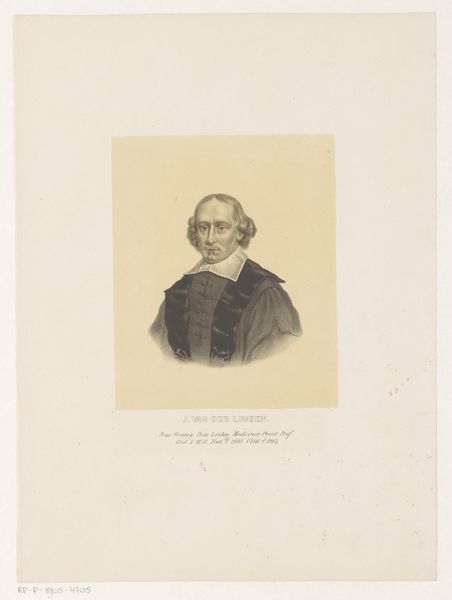
Portret van Eugène de Beauharnais, hertog van Leuchtenberg 1824
0:00
0:00
jeanbaptistemauzaisse
Rijksmuseum
drawing, pencil
#
portrait
#
pencil drawn
#
drawing
#
light pencil work
#
pencil sketch
#
charcoal drawing
#
pencil drawing
#
pencil
#
history-painting
#
academic-art
Dimensions: height 584 mm, width 430 mm
Copyright: Rijks Museum: Open Domain
Curator: Here, we see "Portret van Eugène de Beauharnais, hertog van Leuchtenberg," rendered in 1824 by Jean-Baptiste Mauzaisse. The artist uses pencil in this academic-style portrait. What’s your initial impression? Editor: The gaze is what strikes me first. There’s a heavy quality, both to his eyes and in the way the soft shadows pull downward, hinting at a deeper melancholic narrative perhaps? Curator: It’s interesting you pick up on that sense of melancholy. Beauharnais was certainly a figure marked by the complexities of his familial ties and political affiliations within the Napoleonic era. The artwork exists within a web of social expectations around identity, doesn't it? Editor: Absolutely. His stoic appearance, wrapped in a dark cloak, is classically symbolic. But consider this: The way the light catches the soft curve of his cheekbones makes me think about classical notions of Roman imperial virtue. There is some effort made at elevating the character and solidifying that symbolism into the modern. Curator: Precisely, it’s a potent blend of established visual rhetoric and, dare I say, Napoleonic ambition even after the empire has fallen. We’re dealing with carefully constructed iconography, a narrative carefully built upon existing codes of class, gender, and power. Editor: Do you think the artist might be gesturing toward the complex cultural role he had as a leader in the Napoleonic regime and later as the Duke of Leuchtenberg? Curator: Without question, there are subtle signifiers of this duality: He is gazing resolutely toward an unseen horizon. He seems a man looking forward and this may tell of the continued pressure he was under, the need for resilience against those ever encroaching, perhaps conservative, powers. It hints at a refusal to simply fade away. Editor: Fascinating. The very choice of rendering a portrait in pencil evokes certain codes as well. Consider the material properties of graphite, which lend themselves toward subtle modelling and a slightly unrefined and immediate visual. In that moment it can come off more like honest documentation. Curator: A pertinent observation that reframes the work outside simple political symbolism, forcing a shift in perception toward a more humanistic narrative and personal one perhaps? Editor: Yes, looking closely has certainly altered my initial perception. I walked away with a completely different feeling now than when I first encountered this rendering. Curator: I've come to appreciate how the intersectional historical lens can enrich the reading of something as seemingly straightforward as a portrait. It offers nuance that can open dialogue around identity, privilege and resilience.
Comments
No comments
Be the first to comment and join the conversation on the ultimate creative platform.
